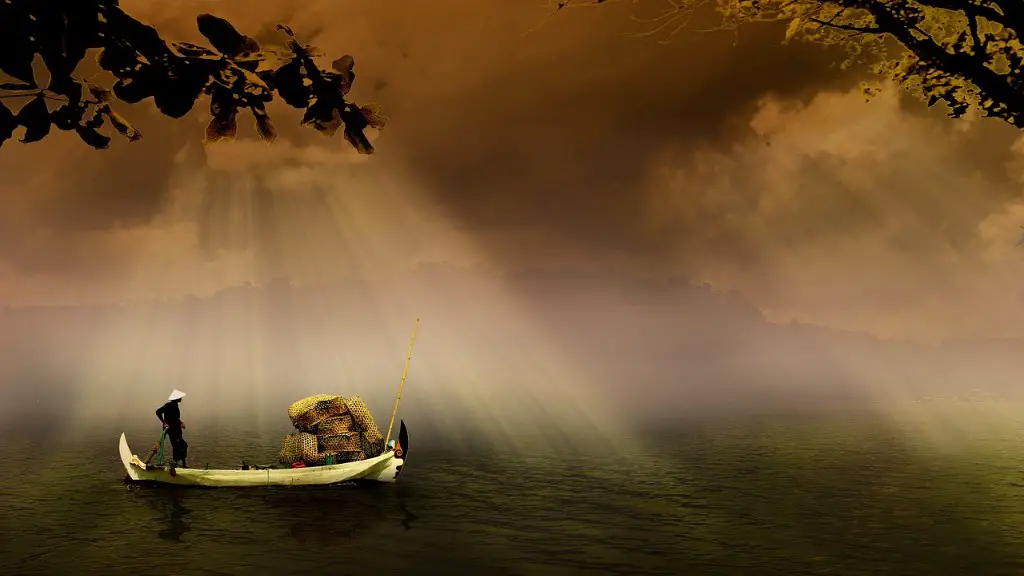The Amazon river has a profound effect on the environment. It is the largest river in the world and has a huge impact on the climate and weather patterns. It also plays a vital role in the eco-system and is home to a large variety of plant and animal species.
The Amazon river has a huge impact on the environment. It is responsible for about 20% of the world’s river flow and contains more than 10% of the world’s biodiversity. It also plays a significant role in global climate change.
What are the environmental impacts of the Amazon river?
The Amazon faces a deluge of threats, including dam-building, deforestation, and pollution from mining and agribusiness. These threats are disrupting fish migration and nutrient cycling, and increasing sedimentation.
The Amazon rainforest is burning at an unprecedented rate, with over 74,000 fires recorded this year alone. The consequences of these fires are far-reaching and could have devastating impacts on the planet. Here are three of the most critical consequences of the Amazon fires:
1. Biodiversity loss: The Amazon rainforest is home to an incredible diversity of plant and animal species, many of which are found nowhere else on Earth. With such a large area of forest being destroyed by fire, this unique biodiversity is at risk of being lost forever.
2. Climate change: The Amazon rainforest is a vital part of the global climate system, and its destruction could have catastrophic consequences. The forest helps to regulate the Earth’s temperature and weather patterns, and its loss would contribute to an overall increase in global temperatures.
3. Health: The Amazon rainforest is a major source of clean air and water, and its destruction could have serious implications for human health. The smoke from the fires contains harmful toxins that can cause respiratory problems, and the loss of the forest could lead to a decrease in the quality of the air we breathe.
What is Amazon and how does it affect any ecosystem
The Amazon rainforest is home to an incredible amount of biodiversity, with over 3 million species living in the ecosystem. This diversity is under threat, however, as the rainforest is being destroyed at an alarming rate. Over 2,500 tree species (or one-third of all tropical trees that exist on earth) are found in the Amazon, and these trees are vital to the health of the rainforest. If the Amazon rainforest is lost, we will lose a vital part of our planet’s biodiversity.
The Amazon River is the last wild river on Earth. Despite its beauty and importance, the river is under constant threats of degradation and contamination. Without it, millions of people will be left without drinking water, a source of protein from local fish, and their livelihoods.
What environmental problems does the Amazon have?
The Amazon rainforest is one of the most important ecosystems on Earth. It is home to an incredible diversity of plant and animal life, and plays a vital role in regulating the global climate. However, the Amazon is under threat from a number of activities, including unchecked agricultural expansion, illegal gold mining, and illegal logging.
If these activities are not stopped, the Amazon could be irreversibly damaged, with devastating consequences for the environment and the people that depend on it.
The Amazon rainforest is a vital part of our planet, providing many essential services. Not only does it provide food, water, wood and medicines, but it also helps to stabilise the climate. Around 76 billion tonnes of carbon is stored in the Amazon rainforest, and the trees release 20 billion tonnes of water into the atmosphere each day, playing a critical role in global and regional carbon and water cycles.
Does Amazon affect climate change?
Well tuned, the Amazon’s hydrological engine plays a major role in maintaining the global and regional climate. Water released by plants into the atmosphere through evapotranspiration (evaporation and plant transpiration) and to the ocean by the rivers, influences world climate and the circulation of ocean currents. By pumping huge volumes of water vapor and nutrients into the atmosphere, the Amazon regulates local and global weather patterns.
Amazon is emitting more carbon than Walmart and Target, according to a recent analysis. The analysis found that Amazon calculated a rate of about 39 metric tons of carbon emissions per $1 million of revenue, compared with 29 for Walmart and 20 for Target.
The analysis did not take into account the fact that Amazon is a much larger company than Walmart and Target, so the actual per capita emission rate may be lower. However, this analysis shows that Amazon is emitting more carbon than its two biggest competitors.
Why is the Amazon important How is climate change affecting it
The Amazon is a key area in the fight against climate change, but is also uniquely vulnerable to the impacts of climate change. Due to a combination of fires, climate change, and land-use activities, the Amazon has lost 30% of its forests. This loss of forests results in a loss of carbon sinks and contributes to climate change. The Amazon is also home to many indigenous communities who rely on the forest for their livelihoods. These communities are being impacted by the loss of the forest and the effects of climate change.
The increasing competition among e-commerce websites can sometimes result in low quality products for customers. In addition, customers may be losing touch with traditional markets that have more history and culture.
How did Amazon impact the world?
The company has made shopping more convenient for customers in a number of ways, including one-click ordering, personalized recommendations, package pickup at Amazon hubs and lockers, and ordering products with the single touch of a Dash button. In-home delivery with Amazon Key is also now available, which is a great option for customers who want their items delivered right to their door.
Floodplain forests and varzea are important ecosystems in the Amazon River Basin. They provide habitat for many species of plants and animals, and play a role in the local economy. Terra firma rainforest is also an important ecosystem in the basin, and helps to protect the basin’s water resources. Igapo is an important ecosystem in the basin as well, providing habitat for many species of fish, amphibians, and reptiles.
What would happen without the Amazon river
The Amazon ecosystem is a complex and delicate one, and its survival depends on many factors working together in harmony. One of the most important of these is the Amazon’s ability to recycle water, which is essential to maintaining the rainforest’s humidity levels. If this system were to be disrupted, the ecosystem would tip over and irreversibly turn into dry savannah very quickly. Estimates of where this tipping point could lie range from 40% deforestation to just 20% loss of forest cover from the Amazon. This highlights how important it is to protect the Amazon rainforest, not just for its own sake, but for the sake of the planet as a whole.
If the rainforest disappears, it would have huge implications for the global climate. The loss of the rainforest would cause a large-scale drying across the region, which would impact weather patterns around the world. The circulation of the atmosphere could also change in response to the loss of the rainforest, which would further alter weather patterns.
What are 3 interesting facts about the Amazon river?
The Amazon River is the second longest river in the world, and it originates in the Andes Mountains in Peru. It flows through nine South American countries before emptying into the Atlantic Ocean. The river is home to a large number of plant and animal species, and it provides 20% of the ocean’s fresh-water supply. Here are 15 facts about the Amazon River that will blow your mind.
Amazon announced its emissions for 2019-2021 in its annual Sustainability Report. The company’s total carbon footprint for 2019 was 517 million metric tons, and it is on track to reach 606 million metric tons by 2021. This represents a significant increase from 2018, when Amazon’s total carbon footprint was 468 million metric tons. The biggest contributor to Amazon’s carbon footprint is its customer’s trips to physical stores, which accounted for 405 million metric tons in 2019. This is followed by Amazon’s own logistics and operations, which emitted 277 million metric tons of carbon dioxide in 2019.
Why is the Amazon River important to the world
The Amazon is one of the most important rivers in the world, not just for its size but for the diversity of life that it supports. It is estimated that the Amazon river basin contains 20% of the world’s flowing fresh water and is home to a third of all known terrestrial plant, animal, and insect species. The Amazon is a vital part of the global ecosystem and its destruction would have far-reaching consequences for the planet.
Rainforests play a vital role in our planet’s health and wellbeing. They act as huge lungs, absorbing carbon dioxide and increasing local humidity. They also help to stabilize the climate, provide homes for an incredible variety of plants and animals, and produce vital rainfall all around the world. We must do everything we can to protect these vital ecosystems.
Final Words
The Amazon River has a massive impact on the environment. It is the largest river in the world and provides a home for an incredible variety of plant and animal species. The river also plays a vital role in the global climate, helping to regulate the climate of the Earth.
The Amazon river has a huge impact on the environment. It is one of the largest rivers in the world and it flows through the rainforest. The rainforest is a very important ecosystem and the Amazon river helps to keep it healthy. The river also provides a home for many different animals.





